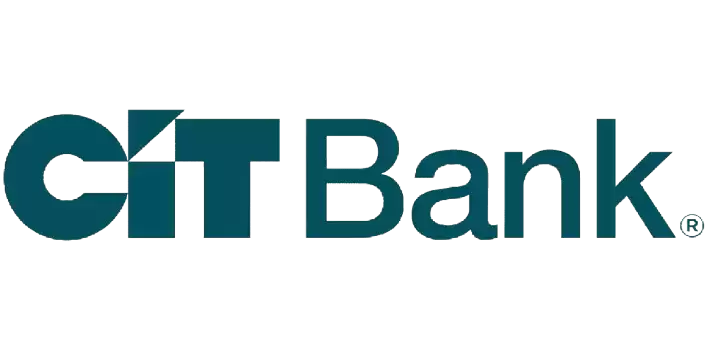If you are looking for long-term investment strategies, there are countless opportunities out there. There are all sorts of investment vehicles including stocks, precious metals, oil and real estate among others. As an investor, you want to be smart about how you invest your money to grow your money many times over.
One of the best ways to avoid risky investments is to have a long-term view. Long-term investing is the best way to avoid some of the emotional decisions (or blowing up trading accounts) that people make when their money is on the line.
In most cases, your investment is likely to increase in value over a longer time frame. Most of the top investors prefer to make long-term investments over short-term ones. When they invest in a company, they don’t do so with the intention of pulling out after two or three years. You too should take this approach and see your investments grow exponentially over time.
Best Long Term Investments
For many, the pandemic was a difficult year not only mentally and physically, but also financially. Between layoffs and shutdowns, people across the country were finding themselves without a paycheck for an unknown period of time.
Now that we've turned a corner in 2023 thanks to stimulus checks and reopening businesses, the economy is slowly beginning to rebalance and personal finances are building back up. If you find yourself with surplus cash, you may want to consider investing some of the funds into your future.
While investing can be a scary deep end to jump into, it doesn’t mean you can’t start small. Even with $1,000, you can put it towards long-term investment strategies. Here are 12 of my latest strategies and avenues on how to invest a sum of money that will benefit you in the long run.
1. Fund Your Individual Retirement Account (IRA)
Setting yourself up for a healthy financial future starts by thinking about yourself early and often. Whether you are young and just beginning your career or in the middle of it, opening up, and contributing to, an IRA account should be a top priority. These types of IRAs allow individuals to set aside tax-free money over time that can grow exponentially.
For many workers with either a 401K or Roth IRA—the two most popular types of retirement accounts—it is a wise option to contribute a portion of a paycheck each pay period in order to keep building the amount in the account over time.
If you decide to go the direct deposit route, or on the contrary, add to it when you prefer, it won’t hurt to have your money compounding for when you need it during retirement.
Consider splitting your money to invest over time to take advantage of dollar-cost averaging, or even contribute in sums of thousands if you can at an early age. The quicker you start an IRA the better investment it will be later on in life.
2. Invest in Exchange Traded Funds (ETFs), Mutual Funds, or Index Funds
The stock market can be a financial goldmine if you have the knowledge and resources to make smart investments. Especially with $1,000 or more to invest, it can be the perfect amount to get you on the front foot.
Exchange Traded Funds (ETFs) are one example of an investment that you can make strategically. An ETF is a basket of securities exchanged on the market, just like a stock.
Real-world examples include investing in bond ETFs and currency ETFs that constantly fluctuate. The beauty of investing in these is having access to many stocks across various industries as well as low expense ratios and fewer broker commissions.
The same goes for both mutual funds and index funds. Handled by a professional broker, putting a grand into these assets is typically the best “bang for your buck.” While a mutual fund aims to beat a given stock market index, an index fund seeks to match an index and grow from there.
While they might be different in strategy, they are both great options to research as you look into the market. Read more about ETFs, mutual, and index funds here.
3. Open a High-Yield Savings Account (HYSA)
Saving money is important at any stage of your life and investing your money into a savings account can be a smart move. Especially as the competition surrounding saving rates and online banking has heated up over the past few years.
A high-yield savings account in particular, which has become increasingly popular, is a type of account that pays 20-25x more savings and interest rates than a standard savings account. This means you can earn money on your sum by having it simply sit in your account and collect interest!
The reason many have turned to these types of accounts is the ease in making transfers between checking accounts and savings accounts. Institutions offering HYSAs are often a one-stop shop for many people in terms of having all accounts in one place.
The simplicity of e-transferring funds between is as effortless as the interest you are gaining in your account. If you choose to use $1,000 towards an HYSA, be sure to research requirements for accounts before you make a decision.
Some frequently asked questions are: Will that amount be enough to open one?, What is the minimum balance required for the account? These kinds of accounts can be the perfect investment as a rainy day savings account.
Some savings accounts go that I would recommend are below:
- Earn up to a $325 bonus and up to 4.50% APY on your money (no monthly fees)
- Get your paycheck up to two days early
- FDIC insurance up to $2 million
- Earn up to 4.51% APY with no monthly fees or minimum balance requirements
- Get your money up to 2 days early
- FDIC Insured
- Earn up to 3.85% APY on balances of $5,000 or more (no monthly fees)
- 24/7 online access to your account and funds
- FDIC Insured
Related: 7 Best 5% Interest Savings Accounts
4. Open a Robo-Advisor Account
Financial technology (fintech) is a tool that every person investing their money should be keen to use. If you have $1,000 and you’re looking for a solution that can help you with an investment strategy, look into opening a robo-advisor account.
If you’re unfamiliar with these sorts of accounts, they are AI-driven, algorithmic-based digital platforms that provide financial advice, trends, and information that can help out investors.
The best robo-advisors like Titan and SoFi can take care of many of the tedious tasks that you would normally work with a normal advisor on, such as account management, goal setting, and portfolio management.
Since these kinds of accounts require little to no fees and can provide a plethora of services, taking a chunk of your money to invest and putting it toward this should be a no-brainer investment. If you’re looking for a low-risk and high-reward investment, this kind of account can do wonders for you as you navigate your financial journey throughout life.
5. Buy Individual Stocks
For the most simple kind of investment that has to do with the market, buying individual stocks is definitely the route to go. While this can be the riskiest investment since many decisions are made on your own, it can also be the best way to turn $1,000s into tens of thousands of dollars.
If you have a strategic financial mindset, you can do some research about different small investment ideas and the best strategies for you.
Start with ensuring that you are financially stable enough to be making stock investments. This means having minimal debt and paid off credit cards. Then, look into different brokers online that can help you buy stocks. Each platform will have different pricing packages and fees to make orders.
Finally, the easy part is placing stock orders! Fund your account with your investment and get to work. Remember that the market is only open Monday to Friday, every day from 9:30 am to 4 pm Eastern Time. Make sure you are prepared to get your orders in during that active window.
Be sure to keep track of your stocks as well by checking them frequently. Try not to get too emotionally invested in the ups and downs of your certain stocks. Just stay knowledgeable about how they are performing so you can make smart choices on when to buy more or sell.
Related: Want to Trade Smarter? Best Stock Picking Services (#5 is Free)
6. Buy Cryptocurrencies
If there’s one trend from the pandemic that has exploded, it’s the rise in cryptocurrencies. Most famously those of Bitcoin, Ethereum, and Dogecoin that have made the front pages of the press over the past year, these forms of currency are digitally encrypted forms of payment that can be used to buy goods and services online.
While each kind of cryptocurrency has a price associated with the currency (e.g., 1 Bitcoin equals $29,813.80 and 1 Ethereum equals $1,798.11), these currencies work similarly to stocks in that they rise and fall.
This is how a $1,000 investment can become profitable. As supply and demand shifts, these cryptocurrencies and more businesses begin to accept it as a form of payment in the years to come. It's also easy to find the best places to buy Bitcoin and other crypto.
- Offers access to more than 200 cryptocurrencies
- Low minimum to fund account
- Quick crypto withdrawals
- Higher fees than other cryptocurrency exchanges
- No fees for crypto trades
- Convenient if you already have a Robinhood brokerage account
- Comparatively fewer cryptocurrencies offered
- No crypto-to-crypto trading
- Advanced features on Kraken Pro, including margin trading
- Great customer service
- Low Bitcoin (BTC) withdrawal fees
- Not available in all 50 states
- Crypto staking no longer available in US
Being ahead of the game before this practice becomes a commonplace in society, it can score you some extra spending cash. There are over 4,000 cryptocurrencies out there right now and investing in the next big thing could score you a fairytale kind of come up.
7. Invest in Real Estate (REITs)
One of my favorite strategies for investing money right now is in real estate investment trusts (or REITs). What are these you may ask? These are companies that own massive amounts of real estate and properties all over the world. From houses to apartment complexes, warehouses, data centers to medical buildings, real estate conglomerates are booming right now as life returns to normalcy.
Since many people are returning to work and/or searching for a new place to live, the real estate industry is extremely active right now, which means these trust companies are turning a pretty penny. The way investors make money is simply when these companies make money! Dividends are distributed based on the income they make from leasing space and collecting rent.
It’s really that simple. These companies can be found on main stock exchanges and invested in that way or brokers can help investors find REIT mutual funds or ETFs too. You can get access to real estate investments by using apps like Fundrise that let you invest in eREITs and can get started with only $10.
- Earn passive income with real estate investing starting at just $10
- Easy-to-use app for seamless access to crowd-funded real estate deals
- Perfect for those who want their money to work for them
We earn a commission for this endorsement of Fundrise.
8. Pay Off Liabilities & Invest in Future Benefits
Compiling debt is something that almost everyone experiences at some point in their financial journey. If you find yourself falling behind or feeling stressed about your finances, paying off your debt by using debt reduction apps and investing in your future is a great way to make sure it doesn’t happen again.
Start with looking backward and focusing on the things you’ve spent money on that need to be paid for now. For example, credit card debt and auto loans are the two major avenues you should look to pay off before moving onto bigger ventures such as your mortgage and student loans. Since your credit score (which allows you to have more financial freedom) weighs heavily on the two former factors, these are the kinds of priorities you should be tackling first.
After you pay off the past, look to the future and find ways you can save $1,000 each month and in your everyday life so you’re not constantly catching up on payments. Some examples are as easy as using money saving apps or include purchasing a home warranty on kitchen appliances at a one-time fee in case they break (instead of paying a much heftier fee later) or staying up to date on your car warranty in case of any accidents and/or part malfunctions. These are simple gestures and investments you can make right now in your everyday life that will save you hundreds of dollars in the long run.
9. Try Peer-to-Peer (P2P) Lending
If you’re looking to go with a straightforward investing route with $1,000 o more, look into trying out peer-to-peer lending. This eliminates the middleman of a financial institution. Connecting lenders with investors at the source, this is a place you can get personal about money, stocks, and investments.
Because investors get better rates than typical banks, and lenders don’t have to worry about the financial institution’s cut being taken, it’s typically a win-win scenario for both parties. If you’re looking for a loan of some sort, this option can give you some of the best rates around. Be sure to do some research because even P2P lending websites take a fraction of the transaction as well.
10. Start a 529 College Savings Plan
Whether you’re a parent thinking about sending your child to college, or a prospective student yourself, setting yourself up properly for the financial aspect of school should be done early.
If you have $1,000 dollars handy or more, why not think about launching a savings plan to cover school? This kind of investment account can even offer tax benefits as well to qualified parents.
Similar to a Roth IRA, a 529 Plan works as a compounding account that can grow interest and “free money” over time. This is why it’s important to start early! Whether you want to start with one deposit of $1,000 or contribute a monthly amount to keep growing your total, it can only help before, during college when you’re paying it off, and after school as you continue to make payments.
As a cherry on top, most 529s don’t have any effect on financial aid eligibility so you don’t have to worry about that when it comes to applying to schools. If you’re a parent or a young adult, this kind of educational investment should be top of mind.
11. Start Your Own Business
Everyone started a side hustle to make a few extra bucks, but what about turning a passion project into a full-scale business? This could be a smart way of investing $1,000 or more if you’re looking to make the leap with your specific hobby or idea.

Of course, there are many building blocks and steps you must go through before investing money into your idea, but remember that even a smaller amount of cash can get you jump-started with your business.
Some of my favorite ways this amount of money could be used include launching a website for your brand or even running some social media campaigns to get your business in front of the eyes of consumers.
As you start from square one, these efforts will allow you to grow and will turn your initial investment into profits for your business. For more inspiration on how to get started, check out this article about how to start a business from the ground up.
12. Invest In Yourself with Online Courses
Last but not least, investing in your own education is always something that will help you out over the course of your life.
Learning valuable skills about finance, literature, art, or any other interest you have can drive your own career and passions forward. It can also help you feel fulfilled and intelligent as you progress throughout your life.
Nowadays, there are so many inexpensive platforms that offer online courses to better your understanding of certain subjects. For example, LinkedIn Learning and Coursera are just a few examples that can teach you anything from financial literacy, to music production, to learning to speak French.
Don’t forget about online college courses as well! Tons of colleges and universities across the nation offer online opportunities that can kickstart a new degree or path in your life. Education is power!
Best Long Term Investment Strategies
Long-term investing strategies are often recommended to reduce the impact of short-term fluctuations in the stock market. For example, there are many retirees who will have most of their money tied up in investments for decades. Many of these people rely on the advice and wisdom of advisers and experts to help them maximize their returns while minimizing risk. But is it possible to time the market successfully, even over long periods of investment? Most experts agree that is possible and there is data that backs this up.
If you're on board, here are some of our recommendations for long-term investment strategies that work.
Avoid timing the market
If you start moving from one stock to the next in an attempt to avoid lows or capture the highs, your chances of losing money will increase significantly. Short-term gains or slumps are not indicators of future market trends.
Stick to your purchase plan
When you have a purchase plan and you are willing to adhere to it, you will continue to invest even when there are market fluctuations.
The best way to do this is to have a predetermined amount that you are comfortable investing at specific intervals, without caring too much about market swings.
Find investments that match your goals
This is all about having specific financial goals and setting a time frame for achieving them. You also need to be clear about how much risk you are willing to take.
As long as your investments match your goals, you will not be prone to making too many emotional decisions.
Diversify your investments
Putting all your eggs in one basket is a recipe for disaster. When you diversify your portfolio, you avoid losing everything in case something goes wrong.
A wise investor will diversify his or her investments across stocks, cash, index funds, mutual funds, gold and other forms of investment like real estate.
Always monitor your progress
From time to time, you should have a look at your entire portfolio to ascertain its progress. Sometimes, you will find yourself having to make a few adjustments to stay in line with your investment goals. If there are major changes in your life, make the necessary changes in your investment plan to match them.
Join investment newsletters
Investment and stock newsletters are insightful emails that offer you valuable insights, advice, and analyses on stock trends. They help you navigate the market, enrich your research, and save time. Like many, you're probably seeking a competitive edge in the market.
With expert insights and diversification strategies, these newsletters present you with fresh investment opportunities and encourage well-informed decisions. They gather essential data, sparing you lengthy research hours and assisting in adept risk management by highlighting potential market challenges. Leveraging these tools, newsletters equip you to wade through market intricacies more proficiently.
If you are interested in joining an investment newsletter, you can see our favorite investment newsletters.
Advantages of Passive Investments
When investing legends have been suggesting something for decades, you couldn’t go wrong in heeding their advice and follow the path of passive investing.
There are two games of tennis: professional tennis and amateur tennis. In the former, players try to win points by playing immaculate shots with accuracy and complemented with deception and strategy to try to outwit and outplay the opponent.
In contrast, in amateur tennis, rather than winning points, players tend to lose points by fouling or making unforced errors. In this type, you’d win automatically merely by making fewer mistakes than the opponent and keeping it simple.
This was the brilliant analogy used by Charles D. Ellis, founder of Greenwich Associates, in his groundbreaking and famous article, The Loser’s Game which was published in 1975.
Although the tennis example was borrowed from Dr. Simon Ramo, the analogy he drew from this example into the investment business is what changed the way passive investing was looked upon at by finance professionals.
Professional tennis was dubbed as ‘The Winner’s Game’ while amateur tennis was dubbed as ‘The Loser’s Game’, which was also the title of the article published by Mr. Ellis.
To quantify his tennis example, he cited Dr. Ramon’s data in which it was discovered that in professional tennis, 80% of the points are won by players but in amateur tennis, 80% of the points are lost by making errors not forced upon by the opponent.
After citing enough examples for both the winner’s and the loser’s games, he drew his analogy: Investing is a loser’s game.
Investing is a Loser's Game
He contended that investing was a winner’s game a few decades earlier wherein professional money managers and institutional investors could ‘outwit’ and ‘outplay’ the market by making informed and intelligent investment decisions.
These investment decisions were successful since the share of the retail investors in total market transactions was above 70% while the ‘professional’ share was only 30%. In short, retail investors, who were amateurs and didn’t know how to play the game with intelligence, strategy, and prudence, dominated the market. There was a huge scope for a professional to come in and exploit the amateurs by just ‘standing and delivering’.
These professionals made a huge amount of money in those times. Big money naturally attracted other professionals into the game. Even these new professionals earned a lot of money. Since these professionals were earning huge returns on their investments, a premise was formed: professional money managers can outperform the market. This premise led to huge cash flows to these managers in terms of managing them.
These flows continued as the money managers continued to earn big bucks till the middle 60s. During that time, the share of the professionals in the market activities increased from 30% to a mammoth 70%. They, the professionals, represented the market now.
It’s difficult to outwit and outplay the professionals. When they became the market, it turned difficult to beat the market. Data in the article showed how the professionals lagged the market on a consistent basis from 1965 to 1970.
The reason for this was that in a desperate struggle to beat the market, these professionals started making more trades and trying new things which ultimately led to a significant increase in the costs but little to no gain in their results. So, while the market was going at its own pace, to try and win the game, these professionals were losing a lot by incurring more costs – making more unforced errors.
Thus, The Winner’s Game had converted into The Loser’s Game and Mr. Ellis contended that if you can’t beat the market, you should join it.
As a way out, he suggested investing in passive index funds which have the lowest costs to manage and operate.
Why You Should Invest Passively
Even today, the maximum of money managers can’t beat the market. Great investors like Benjamin Graham who was the guru of Warren Buffet and Buffet himself have reiterated the concept of low-cost index funds countless times even though they both have consistently beaten the market through decades. While Graham did that when investing was a winner’s game, Buffet is doing it when investing is a loser’s game.
When investing legends have been suggesting something for decades, you couldn’t go wrong in heeding their advice and following the path of passive investing unless you could devote considerable time to making informed investment decisions.
If you aren’t a professional who is capable of reading businesses and evaluating them, you should consider investing a consistent amount each month in these low-cost index funds and dividend growth stocks and watch your wealth grow over time.
Long Term Investing Strategies Summary
For the purpose of this article, we dove into long-term investing options. As such, we didn't focus on short-term trading or day trading.
It’s difficult to argue against the benefits of long-term investing. Historically, most people who have taken a long-term view of investing have ended up making money.
The most important thing is to make sure that you are armed with the right information and the best possible investment options before making any decisions.
We all heard the old saying “Make your money work for you” right? Investing can sound tough if you don't have a lot of money lying around — but it doesn’t matter if you have a lot of money or a little with these long-term investment ideas.










